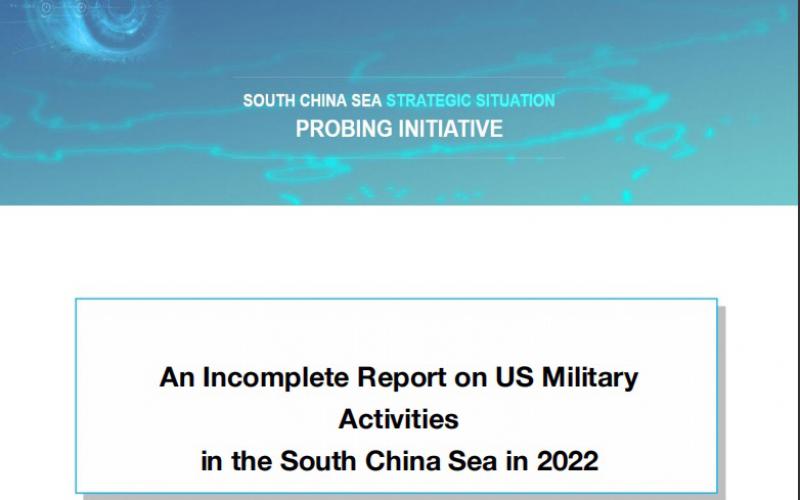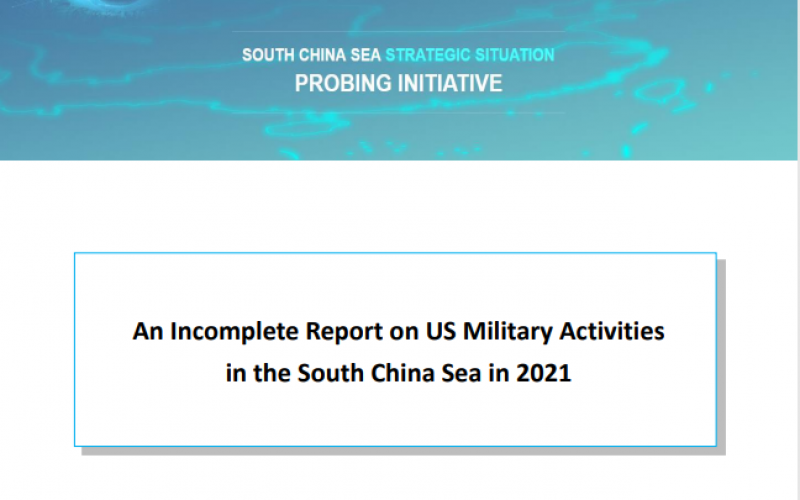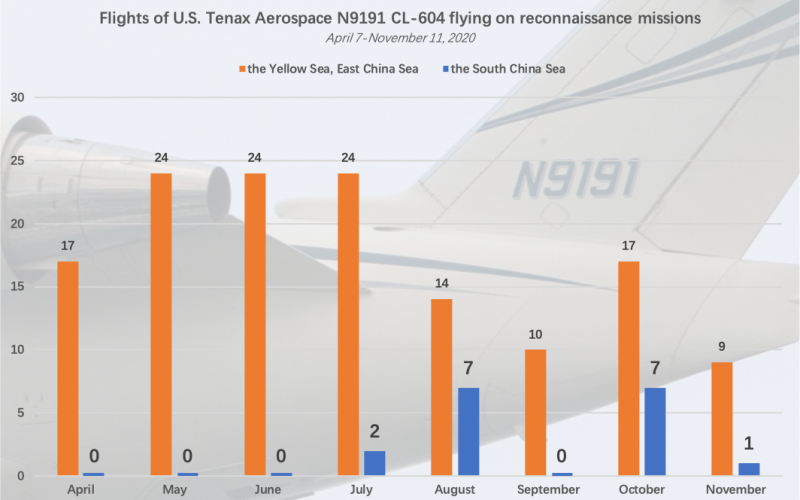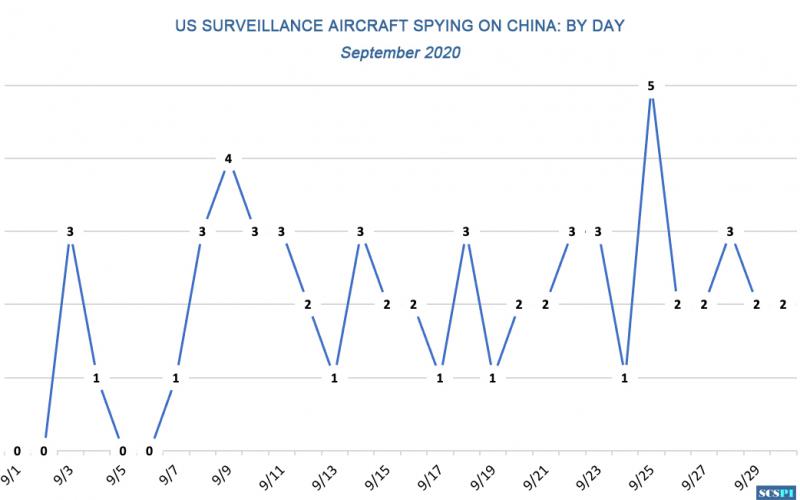MILITARY POSTURE
2023-03-26 | BY SCSPI
In 2022, in the context of the Russia-Ukraine conflict, the US military placed great emphasis on military deterrence against China in the South China Sea, maintaining high-intensity activities including close-in reconnaissance operations, Taiwan Strait transits, forward presence, strategic deterrence, freedom of navigation operations (FONOPs), military exercises and drills, and battlefield construction. Around 1,000 sorties of large reconnaissance aircraft conducted close-in reconnaissance, including reportedly reaching the Chinese mainland’s territorial air space several times. CSGs and amphibious ready groups (ARGs) entered the South China Sea eight times, down from 12 times in 2021, but the duration of each deployment increased, mostly for more than 10 days. At least 12 nuclear attack submarines (SSNs) appeared in the South China Sea, with a clear aim to exert deterrence. As the former Speaker of the US House of Representatives Nancy Pelosi’s visit to Taiwan escalated the Taiwan Strait Situation sharply, the US military’s forward deployment and operations in the South China Sea strengthened the linkage with the Taiwan Strait and the East China Sea.
2022-08-17 | BY Qi Haotian
U.S. and Philippines are steadily improving bilateral intelligence and situation awareness sharing, enhancing interoperability, pushing forward a shift from bilateral to multilateral cooperation, and strengthening logistical support for the U.S. military. In this process, there are disagreements concerning specific matters, such as the ranking of priorities, facility accessibility, and funding issues. But these disagreements are not going to alter the overall trend of the bilateral military cooperation.
2022-03-27 | BY SCSPI
In 2021, as the US placed great emphasis on military deterrence against China, the US armed forces maintained a high tempo of military activities in the South China Sea, such as close-in reconnaissance operations, Taiwan Strait transits, forward presence, strategic deterrence, “freedom of navigation operations (FONOPs)”, military exercises and drills, and battlefield preparation. Specifically, large reconnaissance aircraft conducted nearly 1,200 close-in reconnaissance sorties over the South China Sea, several of which came close to only around 20 nautical miles away from China’s baselines. The US carrier strike groups (CSGs) and amphibious ready groups (ARGs) entered the South China Sea 12 times, more than twice the frequency in 2020. At least 11 nuclear-powered attack submarines (SSNs) deployed to the South China Sea and its surrounding waters throughout the year, among which the Seawolf-class fast-attack submarine USS Connecticut (SSN-22) even “struck an underwater mountain” in the northern waters of the South China Sea. In addition, with a significantly stronger focus on China, the US military has given more emphasis to “great power competition” with respect to strategies, tactics, concepts of operations (CONOPS) and weapons research and development.
2021-12-31 | BY Wang Tengfei, Song Runxi
Since 2021, the COVID-19 pandemic has swept across Vietnam, but a large-scale of Vietnamese fishing vessels continue to maintain their illegal presence in the South China Sea, and even with restrictions, many Vietnamese fishermen are still engaging in illegal fishing in other countries' waters, leading to constant maritime friction with neighboring countries. The interests and rights of China and...
2021-07-13 | BY SCSPI
SCSPI mapped out the paths through AIS data, with their activities showing the following features.
2021-04-06 | BY Chen Qi
In 1975, Vietnam went back on its long-standing position over Spratly islands in the South China Sea – these islands are part of China’s territory – and occupied five ‘features seized by the Republic of Vietnam, or South Vietnam with its capital in Saigon, in the name of “emancipating Quan Dao Truong Sa” (an illegal name of the main islands and reefs of Spratly Islands coined by Vietnam). As of 1998, the country invaded the other 24 islands and reefs of Spratly Islands in succession, bringing the total number of Vietnamese-occupied islands and reefs in the region to 29. Over the past 46 years, in order to reinforce its claimed “sovereignty” and develop marine resources, Vietnam has painstakingly developed those occupied islands and reefs of the Spratly Islands, irrespective of its weak national strength and teetering economic conditions. Among all the Spratly Islands claimants, Vietnam has occupied most of islands and reefs and was the first to deploy heavy weapons to these features unceasingly for a long time.
2021-03-12 | BY SCSPI
Even though COVID-19 wreaked havoc worldwide in 2020, the US military continued to carry out intensive military activities in the South China Sea, with their strategic weapon platforms, typically carrier strike groups, strategic bombers and nuclear attack submarines, operating in the region frequently, posing unprecedented deterrence against China. In the meantime, the US Navy and Air Force continued to conduct frequent reconnaissance operations in the region, deploying a mix of reconnaissance aircraft, including those of civilian contractors, to the South China Sea, all of which built up strong momentum for battlefield construction and warfighting readiness across the US military.
2020-11-18 | BY SCSPI
Since March of 2020, the U.S. has been sending several civilian contractor surveillance aircraft to monitor China’s near seas.
2020-10-12 | BY SCSPI
Despite frequent typhoons in China’s near seas in September, the US sent 60 sorties of spy planes to conduct close-in reconnaissance of China.
2020-09-18 | BY SCSPI
This behavior undoubtedly adds significant risks and unstable factors to global aviation safety, which will cause misjudgments, and be likely to bring danger to real civilian passenger aircraft, especially to those from the countries that are impersonated.










